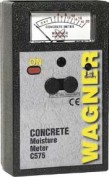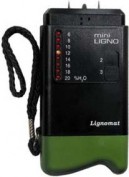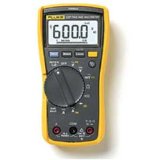Search This Site
Search With Google
Avoiding Common Mistakes With A Moisture Meter
Also On This Site




Avoiding Common Mistakes With A Moisture Meter
Even a professional with a vast knowledge of moisture meters and their use, can make common mistakes when using them. If you do not follow certain guide lines and moisture meter instructions for taking readings, you may well face difficult problems at a later date. The most common mistakes to avoid when using a moisture meter are:
Essential to have the correct moisture meter
As obvious as it sounds, even professionals find themselves using the wrong type of moisture meter. Owning a good and reliable moisture meter is one thing. But the problem can be that you come to rely on that particular moisture meter because is has worked well for you in the past. The problem is that different types of wood and other materials can give extremely different readings. Having knowledge of a particular material you will be testing, is of utmost importance. Many moisture meters are capable of testing different materials, but many are also just designed for work with one specific material.
Moisture meters can either be pin or pinless meters. Pin meters will leave holes in any substance they are used to test on. These can be unsitely and upset any customer you are working for.
Always check the moisture meter has the proper calibration
When it comes to testing different materials, all materials require a different calibration setting. Certain moisture meters will have a built in automatic calibration, which makes life so much simpler. Others have manual calibration and the responsibility for having the correct calibration falls on to the meter user. You also need to test your moisture meter once in a while to ensure that the calibration settings are correct. You can do this by testing a material that has a steady level of moisture.
Always keep the meter pins in good, clean condition. Replace heavily used pins to ensure more accurate results.
Always take several readings
It is an easy trap to fall in. Many people just rely upon one or a couple of readings to ascertain a general level of moisture conditions in an area or material. Doing this can result in missed areas and these missed areas can be places where the moisture is at it's worst, or even the source of a major leak. So be thorough when testing with a moisture meter and don't cut corners when testing. Moisture meters give pretty much instant readings, so taking a few more extra readings will only take up a little more of your time, but could save days of work in the future, as well as keeping your wallet closed!
Understand the results
If you do not understand the results the moisture meter gives, why bother using one? To understand the results you need to understand the material that is being tested. When you buy a new moisture meter, it should come with a chart that provides accurate information relative to the reading results. A particular reading for one material can have a completely different meaning for another material. For example, different species of woods have their own specific and optimal levels of moisture content.
Moisture Meter Store


The complete moisture meter website
Moisture Meter Guide
To Care Is To Share
Moisture Meter Guide 2010 Contact details:garnett65@hotmail.com
| Tramex Moisture Encounter Plus |
| Tramex Compact Wood Moisture Meter |
| Tramex Concrete Encounter Moisture Meter |
| Tramex Skipper Plus Moisture Meter |
| Tramex Roof And Wall Moisture Scanner |
| Sonin Digital Moisture Meter model 50218 |
| Sonin Digital Moisture Meter 270 model 50270 |
| Sonin Moisture Test Tool model 50210 |
| Sonin Moisture Test Meter Model 50211 |
| Oak |
| Douglas Fir |
| Beech Tree |
| Elm Tree |
| Hickory Tree |
| Maple Tree |
| Pine Tree |
| Prevent And Repair Gaps In Wooden Floorboards |
| How To Fix A Squeaky Hardwood Floor |
| How To Repair A Hardwood Floor That Has Buckled |
| Which Is The Best Firewood? |
| Concrete |
| Concrete Moisture |
| Screed Moisture Meter |
| SDS Drill |
| Belle Cement Mixer |
| SDS Drill Advice |
| Which SDS Drill |
| SDS Drill Accessories |
| Drilling Into Concrete |
| Kennedy Tool Box |
| Moisture - Basic Facts |
| Types Of Damp |
| Wet Rot |
| Dry Rot |
| Mold |
| Water Leak Detection |
| Stucco Moisture |
| Water Damage |
| Moisture And Rust |
| Moisture Damage To A Chimney |
| Wallpaper Stripper |
| Plaster Mixer |
| Why Worry About Moisture Problems |
| Does Your Home Have A Moisture Problem? |
| How To Solve Moisture Problems |
| How To Use Anti Mold Paint |
| Rising Damp |
| Condensation |
| Salt Damp |
| How To Avoid Bathroom Condensation |
| How To Remove Black Mold |
| How To Prevent Bathroom Mold |
| Soldering Kit |
| Soldering Kit Contents |
| Soldering Kit Advice |
| Bonsai Tree Classification |
| Growing Bonsai From Seed |
| Bonsai Tree Care |
| Bonsai Tree Training |
| Bonsai Tools |
| Displaying Bonsai |
| Bonsai Calendar |
| Bonsai Plants |
| The Thirsty Light Curve Moisture Meter |
| The Thirsty Light Ladybird Moisture Meter |
| The Thirsty Light Bumble Bee Moisture Meter |
| The Thirsty Light Butterfly Moisture Meter |
| Hanna Instruments |
| Agratronix Portable Coffee Moisture Tester |
| Lawn Aerator |
| Lawn Roller |
| Lawn Rake |
| Lawn Sand |
| Chainshot |
| Chainsaw Gloves |
| Chainsaw Trousers |
| Chainsaw Boots |
| Mac 4 - 20 XT Chainsaw |
| Mac 738 Chainsaw |
| Mac 842 Chainsaw |
| Mac 20X Power Chainsaw |
| Einhell BG-PC 3735 Chainsaw |
| Einhell BG-PC 4040 Chainsaw |
| Einhell BG-PC 5045 Chainsaw |
| Poulan P3314 Chainsaw |
| Poulan P4018 Chainsaw |
| Poulan Pro PP3816AV Chainsaw |
| Poulan Pro PP4218AVX Chainsaw |
| Poulan Pro PP4620AVX Chainsaw |
| Efco MT 4100 SP Chainsaw |
| Efco MT 3500 Chainsaw |
| Efco 132 S Chainsaw |
| Efco 147 Chainsaw |
| Efco 152 Chainsaw |
| Efco MT 7200 Chainsaw |
| Efco MT 8200 Chainsaw |
| Efco MT 3750 Chainsaw |
| Methods Of Obtaining Soil Moisture Levels |
| Hygrometer |
| Psychrometer |
| Rain Gauge |
| Wave Ventilation System |
| Humidity |
| Hygrometer For Keeping Reptiles |
| Humidor |
| Weather Stations |
| Musical Instrument Storage |